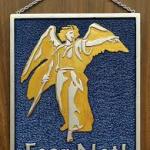Not long ago I led a seminar with a number of colleagues from the Honors Program as part of a two-day end-of-the-semester workshop. Our text was several essays from Michel de Montaigne, a sixteenth-century diplomat, philosopher, and introvert who has become one of my favorite authors over the past few years. My general tendency, both as a philosopher and as a normal human being, is toward the details rather than grand, sweeping schemes, and toward skepticism rather than certainty. Montaigne speaks directly to both of these tendencies.
He lived in 1500s France in the midst of the bloody French wars of religion that broke out between Catholics and Protestants in the wake of the Reformation, and frequently comments on the absurdity of human beings claiming to know with certainty anything about the nature or will of God. He observes that “there is nothing in the whole world madder than bringing matters down to the measure of our own capacities and potentialities,” arguing that “It is hard to bring matters divine down to human scales without their being trivialized.” He was a person of faith and considered himself to be a good Catholic, but sought to live the sort of life that he most admired: “The most beautiful of lives to my liking are those which conform to the common measure, human and ordinate, without miracles, though, and without rapture.” Words of wisdom, I think.
But there is in many of us a seemingly incurable desire to peek into the mind of God. Just as Dorothy and her entourage in The Wizard of Oz, we want to know what’s behind the curtain. On the way to the early show at church one recent Sunday, Jeanne and I caught the last few minutes of Krista Tippett’s radio program On Being. She was interviewing Jewish theologian and prolific author Rabbi Lawrence Kushner, who ended the interview with a charming story from one day when he was giving a bunch of preschoolers a tour of the synagogue.
I was leading a tour of the sanctuary, of the prayer hall with the children in the congregation’s preschool. And then I figured as a piece de resistance I’d have them come onto the bima, or the little prayer stage up in front of the room, where there was an ark where we kept the scroll of the Torah. It was accessible via a big floor-to-ceiling curtain. And I got them up on the stage, and I was about to call them—’Open the ark,’ but I saw the teacher at the back tapping her wristwatch, which as you may know, is an old Talmudic gesture, which means your time is about up, bucko. So, I said, ‘I tell you what, boys and girls. We’ll come back when we get together again in a couple of weeks, we’ll come back here and I’m going to open that curtain there and show you what’s behind it.’ It’s very special. You know, and so they all say, “Shalom, Rabbi,” and like little ducklings, follow the teacher back to the class.
Well, the next day, the teacher shows up at my office with the following story. Apparently the preceding day’s hastily-concluded lesson has occasioned the fierce debate among the little people as to what is behind the curtain. They didn’t know. And, the following four answers are given, which is I think pretty interesting.

Answer One: The first kid guessed that there is absolutely nothing behind the curtain. As Kushner notes, this kid “is obviously destined to become a professor of nihilistic philosophy at a great university.” I read recently in the NY Times that 68% of academic philosophers in this country describe themselves as atheists, with 13% more leaning in that direction. I had no idea that I am in such a minority amongst my peers—what do they know that I don’t know? Food for thought and another post, perhaps. I am reminded of a story Nietzsche tells—in a dream he once took the mask off a Greek sculpture and found himself “staring into the empty eye sockets of nothingness.”
Answer Two: Another preschooler, playing a safe hand, thought that behind the curtain one would find a Jewish holy thing. This kid will probably turn out to be a nominal follower of Judaism, recognizing the existence of “holy things” and perhaps people like the rabbi who are strangely obsessed by “holy things,” but unlikely to be bothered by what they might represent and what Holy Thing might be lurking behind such “holy things.” Pretty much like the vast majority of children cranked out of Protestant Sunday Schools and CCD classes every year.
Answer Three: A third kid, channeling his inner Monty Hall or Pat Sajak, hoped that a brand new car was behind the curtain. There are any number of televangelists who scream something similar from various media outlets on a daily basis. There’s something attractive about The Gospel of Prosperity, the notion that God wants the most faithful followers of the Divine Plan to be rich and prosperous. Too bad that there is not a shred of evidence to support the idea anywhere that I’m aware of.
Answer Four: The most fascinating answer came from child number four. As Kushner tells it, “the fourth kid said no, you’re all wrong. Next week when that rabbi man comes and opens that curtain, behind it, there will be a giant mirror.” Not only is this creative and interesting, I’m more and more coming to believe that this little boy or girl is right. What one expects or hopes for when engaged in faith-related activities may say little or nothing about God, but it says a lot about the person doing the expecting and hoping. Whatever God is—if God is—our thinking and believing about God always begins with what we want and need God to be. Somehow the four-year-old knew that whatever is hidden behind the curtain is us. The story of Incarnation, of God becoming human so that we might become God as Irenaeus put it, begins with this mirror.













